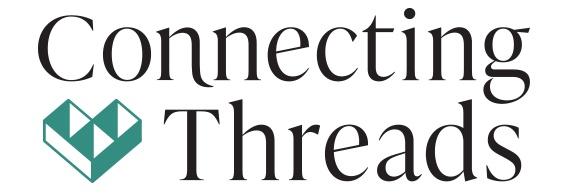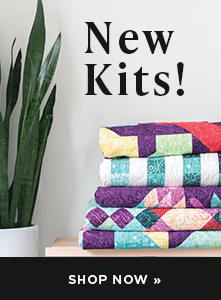Chevrons seem to be everywhere in quilting, home décor, and clothing. They have a modern, graphic appeal with a sense of movement and vibrancy. Since my work revolves around quilting patterns and designing, I have come across several ways to construct chevrons. While there is often more than one way to do a design or technique in quilting, it is a bit unusual to find so many methods to accomplish the same design element. Please keep in mind, I am making up the names of the methods based on the method or basic unit involved.
So, just for fun, here is a run down of ways to make chevrons. The color and size of the chevrons can easily be changed depending on your project.
Rail Fence
The easiest way may be to strip piece two-rail Rail Fence blocks. For example, sew two 2-1/2″ strips, press to the darker fabric, and sub-cut every 4-1/2″. Placing the units at alternating 90º angles shows you the pattern but the units are pieced in diagonal rows before sewing the rows together. The edges are trimmed, leaving a 1/4″ seam allowance.
Half-Square Triangles
Half-square triangles (HSTs) are a very common way to make chevrons. If the HSTs have a lighter and darker side, they can be rotated consistently to form the chevron pattern as shown below.
Strip Piecing with Diagonal Cuts
For this strip-piecing method, fabric strips are sewn together and then cut on a 60º angle. The same or different fabrics are joined and cut on a 60º angle going the opposite direction. The diagonal sub-cut sections are sewn together to form chevrons. Using slightly darker fabrics in the second strip set adds to the 3-D effect.
Below are two drawings to demonstrate the assembly method:
Stitch and Flip
The units making up the chevrons are made with the stitch and flip method. Squares, marked on the wrong side with one diagonal line, are added to each corner, sewn alongside the diagonal line on the side closer to the corner, trimmed leaving a 1/4″ seam allowance, and pressed. It is important to pay attention to the orientation of the diagonal line and the color placement. Half of the units have the diagonal lines going the opposite direction.
Flying Geese
Rows of Flying Geese can create chevrons by alternating the spacing of each row. If the odd-numbered rows start with a Flying Geese unit, the even-numbered rows start and end with a HST as shown.
Tri-Recs
The Tri-Recs ruler makes square units with a triangle in the center.
Two Tri-Recs units make a particularly deep chevron. Note that you need to reverse the color placement on half of the units.



 Tutorials
Tutorials











